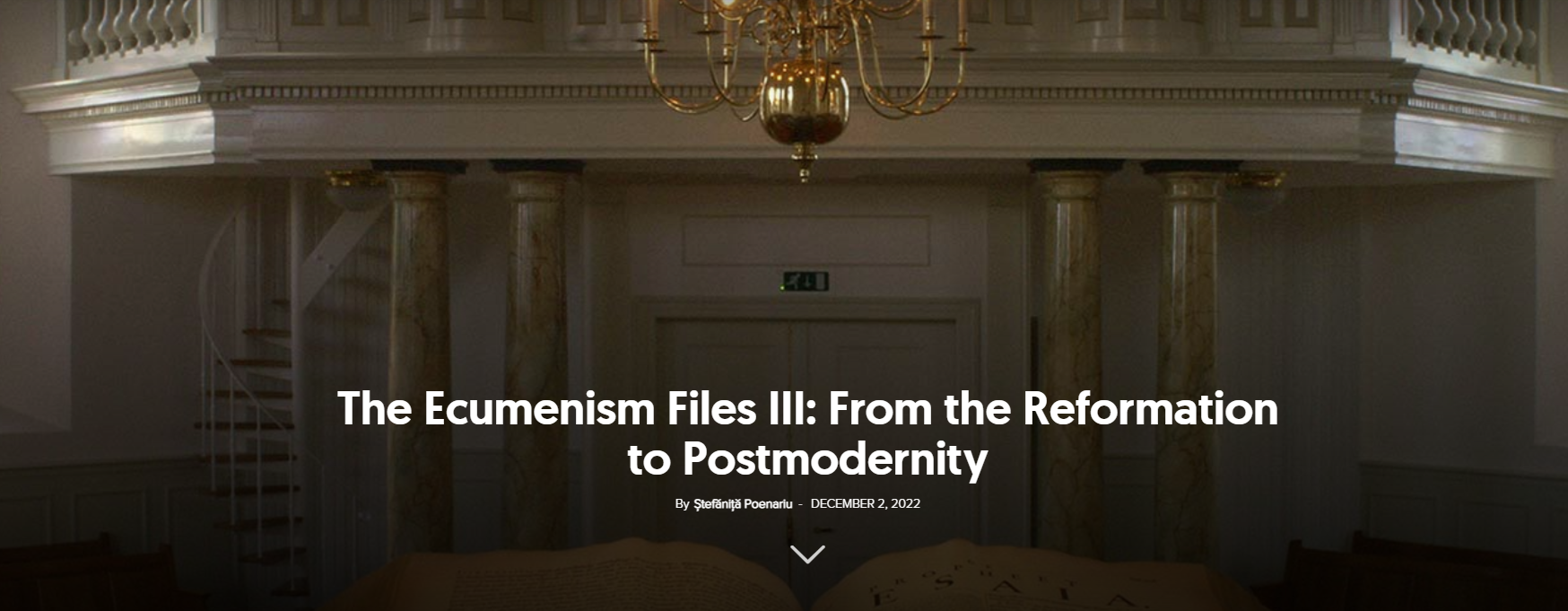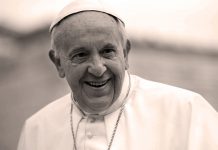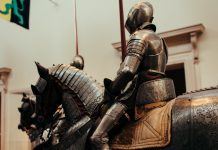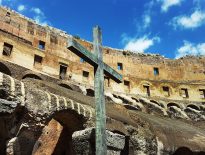The troubled centuries that followed the Great Schism of 1054[1] and the corresponding climate inside the Christian church gradually gave way to profound shifts in the thinking and spirituality of Europeans.
The natural disasters, the famine, and the plague that shook Europe intensified the feeling that the most urgent need of the moment was the spiritual revival of the believers. Consequently, a whole series of reforming tendencies materialised into schismatic or heretical movements during the five centuries spanning between the Great Schism and the Protestant Reformation.
The concern to preserve the orthodoxy of the faith, on the one hand, and to preserve its apostolic character, on the other, made the official church refuse the reforming initiatives. What is more, the repression orchestrated in this period by the church is among the bloodiest in the history of Christianity: the triumvirate of the cross, the sword, and the torture of the Dark Ages. What chance did the ecumenical approach stand in this medieval landscape?
The discrepancy between the ideal Christian life and real spirituality was no longer a taboo subject for anyone in the centuries that preceded the Reformation. Bernard of Clairvaux, French abbot and a major leader in the reformation of the Benedictine Order, declared unequivocally that the sins of Rome had multiplied so much that the sinners couldn’t even notice them anymore. He went on to say that all prelates and priests had strayed from the path of justice and that for a long time, no one had done any good.[2]
In De calamitatibus temporum, Italian poet Baptista Mantuanus wrote, in the same vein: “The Arab sells incense, the Syrian—purple cloth, the Jew—ivory, and here, the priesthood, the sacraments, the altars, the prayers, the sky, and even God, everything is for sale.”[3]
Simony, nepotism, and greed, along with other anomalies in the religious environment such as church courts and census,[4] the lack of access of the faithful to the source of faith—the Bible, the repressions of the Inquisition, and so on, created a climate that inevitably led to pre-Reformation movements[5] such as those of the mystics,[6] the Lollards,[7] the United Brethren, the Cathars, and the Waldenses.
It was, without a doubt, a landscape both dynamic and fickle, in a full development of religious antagonisms.
The medieval dynamic between the sacred and the profane
The ages that preceded the European Renaissance of the end of the 15th century and the Protestant Reformation of the beginning of the 16th century underwent transformation on various levels. The generalised perception that the Middle Ages was strictly a “dark” period in human history is only partially true.
In fact, towards the end of the Late Middle Ages, medieval desensitisation and religious repression were intensely opposed by the emancipation and preparation of the Renaissance spirit. Urbanisation, the demographic growth of the 13th century, the increase in the exchange of goods and trade, and the development of agriculture or geographical discoveries are just a few examples of transformations and events with profound implications in European society.
The diversification of political relations and social, economic, and cultural emancipation led to, among other things, the state of mind illustrated by Italian humanism, which emerged in the 14th century as an indicator of the later humanist spirit. Now, the force opposed to medieval imprisonment were the people, in their creative freedom and as the measure of all things. Creative freedom was explored with the Renaissance, somewhat in opposition to the medieval spirit of disciplining and inhibiting human freedom of exploration.
If in Christianity the spiritual individual is discovered, humanism reveals the natural individual. Limited to the paradigms of the Middle Ages, people did not have free access to the secrets of the Bible or nature, through science. Consequently, the Renaissance would come with a return of mankind to nature and to the values of ancient classicism.
Curiously, during the Italian Renaissance of the 14th century—a precursor of the broader Renaissance that spread across Europe—the Catholic Church would declare itself the protector of this humanist spirit. This was not a singular approach. On the contrary, the church has always sought to adapt to the course of the general and particular history, but in its own way.
The establishment of scholasticism in the 11th century and the appearance of the first universities represent some of the attempts of the Christian church to adapt to the rational thinking of Aristotelian influence, keeping the monopoly of intellectual activity and overseeing the thinking of believers. This constant attempt to control Christian thought and the visible anomalies of the church institution led to an increasingly clear resistance movement.
Unlike the emulation of the Christian scholars of the Renaissance, the enthusiasm of the peasants in these pre-Reformation centuries led to a movement of uneducated people against a common sense robbed by the church norms of the time. The repression of these attitudes, as we will see, will go from intellectual control to force, to the establishment of fear, intimidation, and religious radicalism.
Beyond the religious prerogatives and the attempt to dominate the intellectual and educational areas, the Western church tried to gain ground in the political sphere as well. The appointment of Pepin the Short, King of the Franks, as the first civilian leader anointed by the pope was not without repercussions. The “Donation of Pepin,” from the years 754 and 756, led to the birth of the papal state.
Once they became heads of state, the popes ended up neglecting their religious obligations in favour of political ones. The feudal hierarchy was transposed, at the ideological level, into the religious sphere.
Sociopolitically, the king exercised his power through feudal overseers; the nobles leased the land, and the peasants worked it. This social connection became analogous to the papal institution’s idea of church organisation: God is a feudal monarch, the pope is the subordinate and deputy of the monarch, and territorial leadership is exercised by bishops.[8]
The kings of Europe would not have been able to cope with the rise of papal power if the (pre)renaissance spirit had not created the framework for the development of national identity. Using the newly-born nationalist spirit, the sovereigns opposed the universal state led by a universal religious leader. The flourishing of city-states in the context of the Italian Renaissance led to the formation of nation-states, conferring power on national sovereigns, who were able to offer protection to reforming or even schismatic initiatives within the church.[9]
Moreover, the development of trade gave authority to the middle class and thus the kings had support in their struggle with the religious domination of the papacy.[10] The new, wealthy middle class became interested in anything that constituted an innovation in a humanistic spirit, and their wealth offered them the necessary time for study. Hence the interest in the spirit of the Reformation.
The Crusades
One of the paradoxes of Christianity, and another historical curiosity of the Middle Ages, is the phenomenon of forced conversions to Christianity. These were born in the context of the 11th and 12th centuries, in which the Western church became concerned, among other things, with the liberation of Jerusalem from Muslim domination and the fight against the pagans.
From an ecumenical point of view, the Crusades could be interpreted as attempts at (forced) evangelisation, an approach to Christian unity through repression, forcing elements external to the church to align with the internal direction.
Essentially armed pilgrimages to Jerusalem under the banner of the cross, in a struggle between two continents (Europe and Asia) as well as between two religions (Christianity and Islam), the Crusades started in the West and their stated aim was the liberation of the holy places that were under the jurisdiction of the Arabs.
In addition to this purpose of a religious nature, political and economic interests were also pursued. In addition to accumulating resources, the Crusaders sought to create feudal states, from which they would obtain power, authority and wealth,[11] according to the western model.
Finally, in the territories occupied by the Ottomans, the Crusaders were defeated, so the impact of the expansion, the reconquest of the holy places and the missionary tone did not have the intended effects.
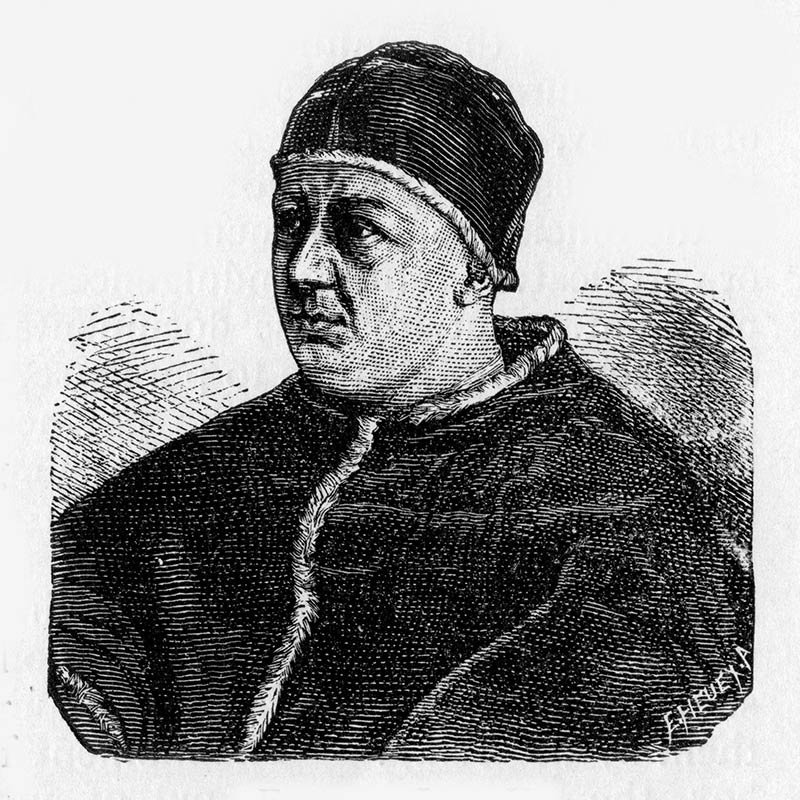
The Inquisition
If the militancy of the Crusades—as an instrument of religious propaganda—had the objective of Christianising the pagans through intimidation and forced submission, internally, the church courts revealed one of the bloodiest instruments: the Inquisition. As the attempt to unify the church with the pagan elements outside it failed, western intra-church unity became an increasingly important concern, and the pretext of this internal unity became a driving force.
The Inquisition claimed to originate in an apostolic tradition of eradicating heresy, as it had happened in the first Christian centuries. Its history in the Middle Ages covers the persecution of heretical doctrines until 1480, the persecution of witches in the 14th and 15th centuries, and the Spanish Inquisition, established in 1480.[12] Through the Inquisition, the church began to fight intra-church heresies and proposed strategies to eliminate disruptive elements. The main motive of this church body was directed against “heretical depravity.”
Paradoxically, the Inquisition had the support of the most learned people of the time, such as Bonaventure, an Italian Franciscan monk from the 13th century, a scholastic theologian and philosopher, and Thomas Aquinas, a Dominican priest from the 13th century, theologian and philosopher in the tradition of scholasticism, the father of Thomism and natural theology.
In addition, the state legislation supported this Sanctum Officium as the ecclesiastical tribunal of the papacy. Initially, this “holy office” was delegated to the bishops and later it gained scope and was entrusted to several monastic orders.
If formally the Inquisition entailed an investigation, in reality, it made the transition from judging heretics and excommunicating them to accepting torture as a method to reach the truth and working with state instruments to execute the sentences given to the alleged heretics. These punishments usually involved the death of the accused.
The practice demonstrated the idea that the church had the right of life and death over its members[13]—for some, quick death by burning at the stake; for others, slow death. In this sombre setting, burning at the stake had become a true profession of faith.
During this period, the principles of tolerance were hardly heard. Sporadically, a single voice, like Peter Cantor’s,[14] bishop of Paris, would still stand up against the death penalty.
Reforming, heretical, and schismatic movements
Following the decentralisation of political power, but also as a result of the failure in communication and the lack of willingness for reformation from within the church[15], various heretical or reforming movements arose. Some of the reforming movements achieved their goal, some materialised in heretical schisms, and others ended in segregation.
The accusations of heresy came against the background of intra-church schismatic movements from the Middle Ages that led to the formation of several religious groups, which amended the liturgical forms, dogmas, organisational structures or the conduct of the clerics of the mother church. Some aimed at the internal reformation of the church, and others were doctrinal heresies.
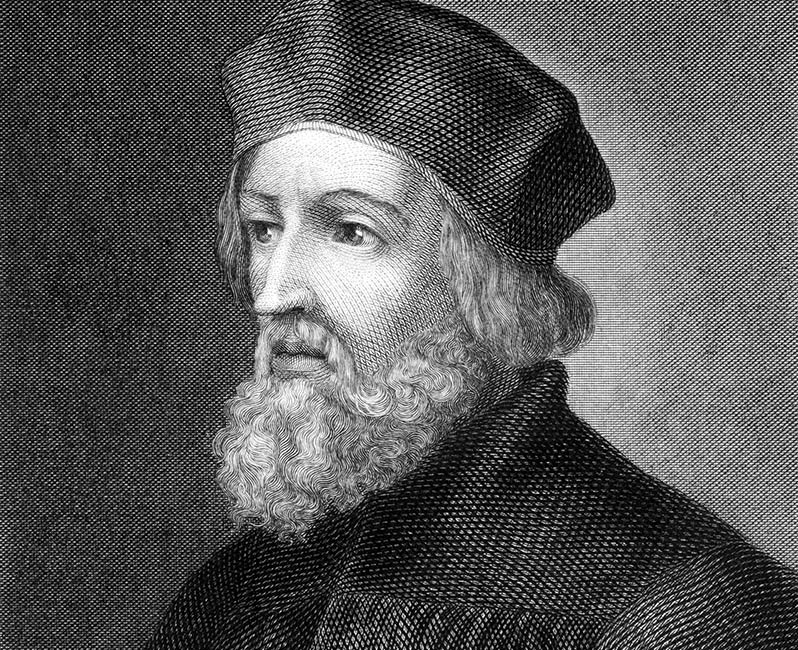
Against this background, pre-reformers such as John Wycliffe or Jan Hus (pictured above) reaffirmed the authority of the Bible as the only norm of the believer,[16] and Christ was recognised as the head of the church, to the detriment of the popes.
John Wycliffe, the “Morning Star of the Reformation,” anticipated the doctrines of the later Reformation, and his ideas would be continued in the teachings of his disciples, the Lollards. For him, the Bible was the source of all doctrines, a holy book that had to be put in the hands of the laity, because it was intelligible to everyone.
In addition to denouncing corruption and immorality in the church, he declared himself against the church’s understanding of the Eucharist, asserting that he did not believe that bread and wine become blood and flesh.[17]
A promoter of Wycliffe’s teachings, Czech pre-reformer Jan Hus campaigned for the reformation of the clergy and against religious interference in political affairs. For serving as a Catholic priest amid the papal schism[18] while leading the Czech Reformation, a precursor to the Lutheran Reformation, Jan Hus was eventually accused of heresy and burned at the stake in Konstanz, Germany in 1415.
The principles of the later Reformation were to be found in almost all the pre-Reformation movements of the 11th to 16th centuries, whether innovative or heretical.[19] The Cathars (Albigensians), the Petrobrusians, and the Waldenses were the three important schismatic movements within the Church of the West. The Cathar movement is primarily distinguished by its opposition to the clerical and sacramental aspects of the church.[20]
The Petrobrusians also denied the clerical authority, the sign of the cross, the baptism of children, the liturgy with its sacraments, church wealth, and the papacy as an institution. Driven by a puritanical spirit, based only on Scripture and encouraging austerity, the Waldenses considered preaching as an honour and a personal responsibility.
After they were considered a heretical movement, the Waldensian message started to contain anti-clerical and anti-hierarchical teachings as well. The seventh-day Sabbath,[21] as a feast kept on Saturdays, was a principle discovered and observed by the Waldenses.[22]
The schismatic aspects of the pre-reformation movements within the church concerned doctrine, rituals and church organisation. Some of these ideas came as a result of merchants’ contact with Byzantium, from where they imported them to Central and Western Europe.[23]
The general perception of the era was that the Cathar sect derived its doctrine from Eastern Europe and the East, from the Paulicians, who rejected the Old Testament and promoted a strict dualism, and from the Bogomils, who rejected the Eucharist and replaced baptism with a ritual prayer and the laying on of hands.[24] While the Waldenses and Cathars were attracting the attention of the church in southern Europe, the Beguines and Begards were active in the lower Rhine and adjacent territories.
The Waldenses were not interested in mystical practices, they kept the Eucharist, did not adopt Manichean practices, and emphasised the importance of following the practices of the apostles.[25] The eschatological Joachimites preached a new era of peace and love, preceded by a short period of the Antichrist’s rule. The Cistercian movement and the movement of the mendicant monks were some attempts kept within the church, for the spiritual revival and reformation of the Latin Church.
If in the 12th century the heresy within the Catholic Church was born among the common people, the heresy of the following centuries had educated people as its militants.[26] The spirit of the pre-Reformation and the split with the Latin Church also occurred in the context where the faithful aspired to an “inner piety”,[27] which inevitably led to an undercurrent of a mystical nature.
Regarding the influence of the cultural framework in favour of internal, heretical or schismatic reforming movements, the invention of the printing press by Johannes Gutenberg (1468)[28] is noteworthy. The printing press facilitated the spread of the writings that were the basis of the Reformation, such as the Bible, Il Principe,[29] the works of philosophers from Antiquity, and so on. All these infusions of novelty in society generated individual or group initiatives towards what would become the great Reformation.
During this period, the stability of the Eastern Church was affected by the fall of Constantinople and the formation of the third Rome—the Russian Orthodox Church.[30] In 1453, the conquered Constantinople became an Islamic capital.[31] Despite the unfortunate circumstances during the 11th to 15th centuries, the old Eastern churches managed to survive, keeping their identity from the first centuries after Christ.
Less numerous and less developed compared to the West, the heretical movements in Byzantium were catalysed by the sociopolitical context, which was different from the Western one. In the East, Bogomilism represented an anthropomorphic perception of God.
They denied the Sacred Mysteries (Church Sacraments), rejected the worship of relics or icons, and protested against the church hierarchy. With roots in Russia, the Strigolniks were influenced by the Bogomils. They had an anti-clerical attitude and contested the grace of the priesthood, and, at the same time, they denied the sacramental character of the Mysteries and condemned confession before priests. In the 17th century, this movement was to join another, called the Old Believers.[32]
Medieval ecumenism—a counter-utopia?
If the efforts of the Christian church up to the year 1054 were to keep the church united by solving the doctrinal, liturgical, and political schisms, after the year 1054, and especially in the first years after the Great Schism, the efforts were channelled towards the unification of the two great separated churches—the Roman Catholic Church (in the West) and the Orthodox Church (in the East).
Attempts to unite the churches continued from emperor to emperor and from pope to pope, reaching well into the 15th century.[33] The Council of Lyon of 1274 and the Council of Ferrara-Florence (1438-1445) were the most important in this direction. While the unionist approach in Lyon was the idea of Pope Gregory X as the last solution to save Byzantium through the stratagem of uniting the two churches, the councils of Basel and Ferrara (1431-1449) were the last attempt to reconcile the Churches of the West and the East.
In addition, the Execrabilis bull of 1460,[34] issued by Pope Pius II, condemned any initiative of the popes to appeal to any such ecumenical council in the future. This document was rather propagandist, and during the Renaissance, its effects would be diminished.
The struggles for supremacy and the means used revealed the true nature of the ecumenical motivations within the medieval church. The spirit of Christ’s prayer for unity was that of love and acceptance, while the spirit of the 11th to 15th century church was revealed to be one of violence and intolerance. The Crusades and the Inquisition are an undoubted demonstration of this fact.
Even if it was not as preoccupied as the Eastern Church with the orthodoxy of the faith, the Western Church was far more concerned with the union, but by categorical and violent means, and with the aim of having its claim of superior authority accepted. Precisely for this reason, the first five centuries of Christian church history after the Great Schism are marked by attempts of the church to dominate and gain power in relation to the state, the pagan Arabs, and itself.
The struggle for supremacy between the sister churches was, in fact, more of a contextual, conjunctural attempt, a bargaining chip in the face of bigger objectives, such as the survival of Christianity against possible Muslim invasions. The treatment to which the pagans were subjected, of being driven away or invaded, was then transferred to the Christian brothers in the church. The differences of opinion and the critical and reforming spirit were most often sanctioned by punishments that could end with even the death of the heretic.
The history of the medieval individual would end with the beginning of a history of the “new man.” It was actually the beginning of the liberation of the human being and the recognition of its potential—a being that, as has been proven, cannot be brought into the Kingdom of God by force.
The circumstances of medieval church history make us realise that the unity achieved through fear is a counter-utopia. Unity by force is impossible. Unity can only be achieved by decision—a decision based on freedom. Ecumenism cannot exist without freedom of thought.
Ștefăniţă Marian Poenariu has a master’s degree in theology, sociology and education. He is a PhD candidate in educational sciences and teaches at Transylvania International School, of which he is the founder.













